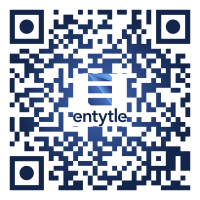Do you come across questions like – What is Wallet share? What is Wallet Share Gap? How to identify opportunities early to fill the gap? And more. We will answer all such queries in our blog series on “Wallet Share”. This is part 1 of the series: Wallet Share Leaking – The Silent Drain on Your Profits
What is Wallet Share?
Wallet share is the percentage of a customer’s spending on a particular product or service that goes to your company. It’s also a measure of how loyal your customers are and how much revenue you’re generating from them. As aptly stated in the HBR article,
“Finally what matters is the share of wallet beyond all customer satisfaction metrics.”
A machine along its life cycle has multiple recurring revenue opportunities. After the machine is installed and commissioned and before it is retired, there are multiple needs for services, parts, and consumables along the life cycle. Each of these events is an aftermarket opportunity and provides a recurring revenue opportunity that adds up to the overall wallet share.

What is Wallet Share Gap?
In each of these events, there is money spent. From an industrial OEM perspective, these events provide an opportunity to earn revenue. What portion of the spent Industrial OEM can capture back defines their capability to capture the wallet share. Any money on the table that can come back to OEM if goes to competitors or third parties leads to a wallet share gap or entitlement gap.

What Do Industrial OEMs miss out on their Wallet Share?
It is important for Industrial OEMs to keep track of their wallet shares? However, in our experience, we have noticed that OEMs tend to be reactive in their approach towards tracking these events. They wait for the customers to reach out to them for parts or services, which can cause them to lose out on potential business. Without proper visibility, there is a chance that customers may turn to third-party vendors or competitors. Industrial OEMs can lose touch with their customers for various reasons::
- The touchpoint to the customer organization leaves or retires. Industrial OEMs traditionally have been dependent on individuals on their side building deep connections with customers. However, the moment they leave the connection goes with them. This also leads to loss opportunities in the future including potential equipment opportunities when the current equipment goes to end of life event.
- Many organizations are not good at transitioning the relationship to aftermarket teams after the equipment sales happen. Many are just focused on the new equipment sales as these are large revenue events. Despite knowing that the profitability margins are much higher in the case of aftermarket sales, the lack of enough organizational power behind aftermarket functions leads to wallet share leaks.
- Without the right set of digital tools, there is no visibility to the customer base within the Industrial OEM organization. Industrial OEMs are usually focused on the top 10 or 20% of customers who take their complete mind-share. The long tail is served in a reactive manner. If someone comes asking for a part or service, they are served otherwise it usually is lost to competitors and third parties.
How to be Pro-active in finding opportunities?
The question is how organizations can become proactive in mining these opportunities. Is there a way that these events can be anticipated well in advance?
The good news is that there is a way to do it and the answer lies in harnessing the data points. Usually, equipment demonstrates a cyclic behavior in terms of its services, parts, or consumable needs. This is also termed a “duty cycle” or “failure rates” or “consumption rates”. Easier said than done because machines operate in a variety of environments. A chiller operating in a hot and humid environment will have very different failure rates for a part from a chiller operating in a comparatively cold climate. OEMs many times have no visibility of these duty cycles. This limits their capability to do any prediction of such events. Without granular knowledge of machine performance, it is difficult to understand how, when, and why to proactively approach a customer with an Aftermarket offer.
With the advance in AI, Industrial OEMs have opportunities to deal with wallet share in an automated and scalable way. The key is to mine those patterns across the services and sales transaction that is happening across the organization. In the second part of this blog, we will dive deeper into how to set a framework that can help organizations predict aftermarket opportunities by using AI techniques and what data prep work is needed to do such analysis.
Stay tuned for the next part in this series.








